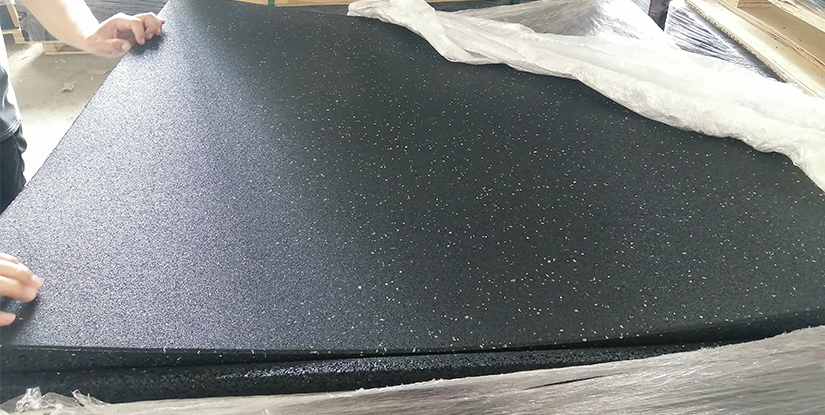Outdoor Exercise Mat — Durable, Weather-Resistant Fitness Flooring

Overview of Outdoor Exercise Mats
An outdoor exercise mat is a purpose-designed surface that enables safe, comfortable, and durable workouts outside. Engineered to withstand elements such as sunlight, moisture, and abrasion, these mats bridge the gap between traditional indoor fitness flooring and the variable conditions of parks, rooftops, beaches, and backyards. For fitness professionals, recreational athletes, and casual users, the right outdoor mat enhances performance, reduces injury risk, and extends the usable training area beyond indoor facilities.
Key Benefits
- Weather resistance: UV-stabilized materials and water-resistant cores maintain integrity under sun and rain.
- Portability: Lightweight construction, rollable profiles, and secure straps make transport and storage straightforward.
- Durability: High-density foams and reinforced outer layers resist tearing and abrasion from rough surfaces.
- Safety and comfort: Shock absorption reduces joint stress during dynamic movements; non-slip surfaces minimize the risk of slips and falls.
- Versatility: Suitable for yoga, calisthenics, mobility work, bootcamp training, and recovery sessions.
Materials and Construction
Outdoor exercise mats are typically constructed from one or a combination of the following materials: EVA foam, closed-cell PVC foam, thermoplastic elastomers (TPE), and reinforced rubber blends. Each material offers a different balance of cushioning, weight, and weather resistance. Closed-cell foams prevent water absorption, while UV-treated surfaces prevent degradation from prolonged sun exposure. Reinforced seams, anti-abrasion top layers, and textured undersides contribute to longevity and grip on uneven terrain.
How to Choose the Right Mat
Selecting an outdoor exercise mat requires consideration of intended use, environment, and user preferences. Key criteria include:
- Thickness: Thicker mats (8–15 mm) provide superior cushioning for high-impact training; thinner mats (3–6 mm) increase ground feedback for balance and mobility work.
- Density and firmness: Higher density reduces surface deformation under load and improves stability for strength exercises.
- Dimensions: Longer and wider mats accommodate dynamic movements and multiple users during group sessions.
- Surface texture: A textured face improves traction when performing fast transitions or holding warm-up positions.
- Weight and portability: Consider foldable designs or roll-up mats with carry straps for frequent transport.
Care and Maintenance
Proper maintenance extends the service life of an outdoor exercise mat. Recommended practices include:
- Rinse off sand, dirt, and salts after use; avoid harsh abrasives.
- Use mild soap and lukewarm water for periodic cleaning; thoroughly air dry before storage.
- Store rolled or folded in a cool, dry place away from prolonged direct sunlight to prevent UV damage.
- Inspect seams and surface coatings regularly; repair minor tears promptly with manufacturer-approved adhesive or patches.
Installation and Use Cases
Outdoor mats require minimal installation—typically unroll, position, and secure. For temporary setups, anchor points or weighted corners prevent wind displacement. Common use cases include:
- Group fitness classes in parks and plazas.
- Personal training sessions on rooftops and terraces.
- Functional training, plyometrics, and dynamic stretching areas.
- Rehabilitation and mobility sessions where a clean, cushioned surface is needed outdoors.
Safety Considerations
To ensure safe outdoor training, observe the following recommendations:
- Place the mat on as level a surface as possible to reduce instability.
- Avoid extending mat edges onto loose substrates such as gravel or wet grass.
- Use protective footwear or barefoot protocols according to activity and mat material.
- Monitor environmental conditions—extreme temperatures can affect mat pliability and grip.
Popular Accessories
- Carry straps and storage tubes for transport.
- Anchoring stakes for semi-permanent outdoor installations.
- Protective sleeves or bags to reduce UV and moisture exposure during storage.
- Cleaning kits with manufacturer-recommended solutions to preserve surface coatings.
FAQs
Q1: Are outdoor exercise mats waterproof?
A1: Most are water-resistant, especially closed-cell foams; fully waterproof designs are available for wet climates.
Q2: Can I use an outdoor mat for weights?
A2: Light to moderate free-weight work is acceptable; for heavy dropped weights, use specialized reinforced flooring.
Q3: How thick should the mat be for high-impact training?
A3: Aim for 10–15 mm thickness with higher density material for better shock absorption.
Q4: Do outdoor mats get slippery when wet?
A4: Surface texture reduces slip risk, but wet conditions can decrease traction; dry the mat promptly.
Q5: Can I leave the mat outdoors permanently?
A5: Continuous exposure to sun and rain shortens lifespan; semi-permanent placement with shade and anchors is preferable.
Q6: How do I clean sand and dirt off the mat?
A6: Rinse with water, use mild soap for residue, and air dry fully before storing.
Q7: Are there eco-friendly outdoor mat options?
A7: Yes—some manufacturers use recycled rubber, bio-based TPE, or eco-certified foams.
Q8: Will the mat insulate against cold ground?
A8: Thicker closed-cell foams provide thermal insulation and reduce conductive heat loss.
Q9: How long should a good outdoor mat last?
A9: With proper care, 3–7 years is typical; material quality and exposure determine longevity.

